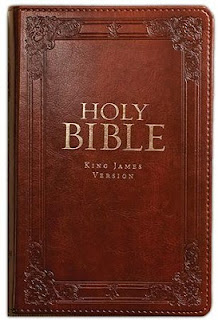Review of Introduction to "The Bible" Part 1
Review of/Introduction to the Bible – Part I
Welcome to the library known as the bible! That is one of the first things readers
should understand as they approach the bible.
It is not so much a book but a collection of books in which one finds
various forms of literature, i.e. narrative, poetry, litany, etc. My intent in writing this brief review/introduction
is to give the reader some tips as they consider entering what I consider to be
the most intriguing and inspirational “library” of all time.
First when purchasing a bible consider what you want to do
with it. Is it just for reading, study
or both? There are paraphrases of the
bible. These are bibles that have taken
an English translation and updated the language in an attempt to make the text
more comprehensible. The prime example
of this is The Living Bible which is fine to read but not for study. For studying the bible you want to use a translation. Translations have as their source the
original Hebrew for the Old Testament and Greek for the New Testament.
There are many wonderful translations to choose from. There is the old standard, The King James
Version. It has stood as THE English
translation since it was first authorized in 1611. Of course there are a number of more
contemporary English translations. The
most readily used are the New Revised Standard Version, the Revised English
Bible, the New American Bible, the Good News Bible, and the New International
Version.
Before purchasing one of these translations it would be a
good idea to check with your pastor/priest to see what translation is used for
your worship services. That way you will
be reading what you hear on Sunday. The
Roman Catholic Church uses the New American Bible. The Episcopal/Anglican churches tend towards
the Revised English Bible. Many
Protestant churches use the New Revised Standard Version, although nothing is
standard and much is left to the discretion of the local pastor and/or
congregation.
My own personal bias is The New Oxford Annotated Bible with
the Apocrypha. It uses the old Revised
Standard Version translation which I prefer for both reading and study. I still think it is the best English
translation, and this particular publication includes the “Apocrypha” which are
those books of the Old Testament that are in the bible of the Roman Catholic
Church but not Protestant churches. These
intertestamental books may not be scriptural for Protestants, nonetheless I
agree with Martin Luther when he called them “profitable.” They are good to know even if you are a
Protestant. But again check with your
pastor/priest.
One other thought on reading the bible. You may read it from front to back. A lot of people have done that and found it to
be an advantageous discipline. But for a
lot of others, myself included, they can get bogged down
when it comes to books like Numbers or Leviticus and give up. Remember what I said at the outset. The bible is a library. And like any library you can move around from
one section to another. Read a book by
one of the prophets, then read one of the gospels, and then perhaps one of the
letters by St. Paul. If something
doesn’t resonate with you at the time, go on to something else. For me Genesis (It means “beginnings”) is a
great place to start. It is my favorite
book of the bible. Great stories with
very human characters. The Gospel of
Mark is a good one to read. It is the
shortest and can be read in its entirety in less than an hour. My favorite gospel though is Luke’s. His
infancy narrative is remarkable and he includes some extraordinary episodes that
are unique to his account, like the Road to Emmaus in Luke 24: 13 - 35. In terms of the letters of St. Paul, they
don’t get any better than Galatians and Romans.
There you have it, the bible as a library. A library worth visiting again and again. In Part II of my review of/introduction to
the bible I will offer some additional suggestions for its study.
Written by Richard Dick, Library Assistant, O’Kelly Memorial
Library





Comments
Post a Comment